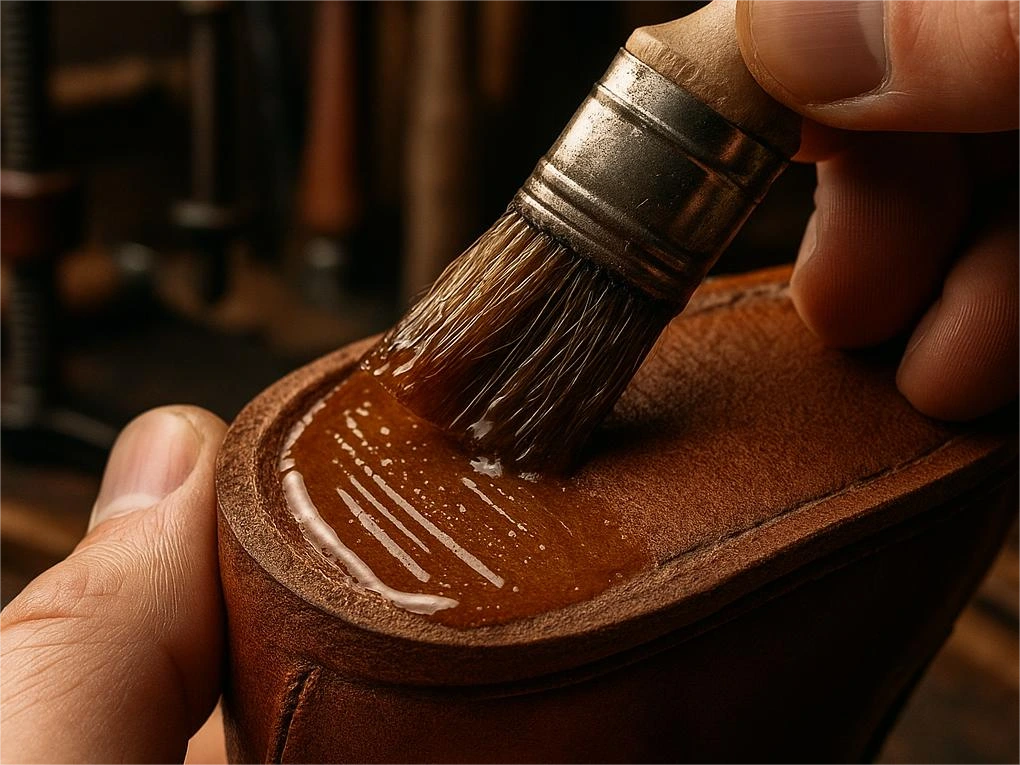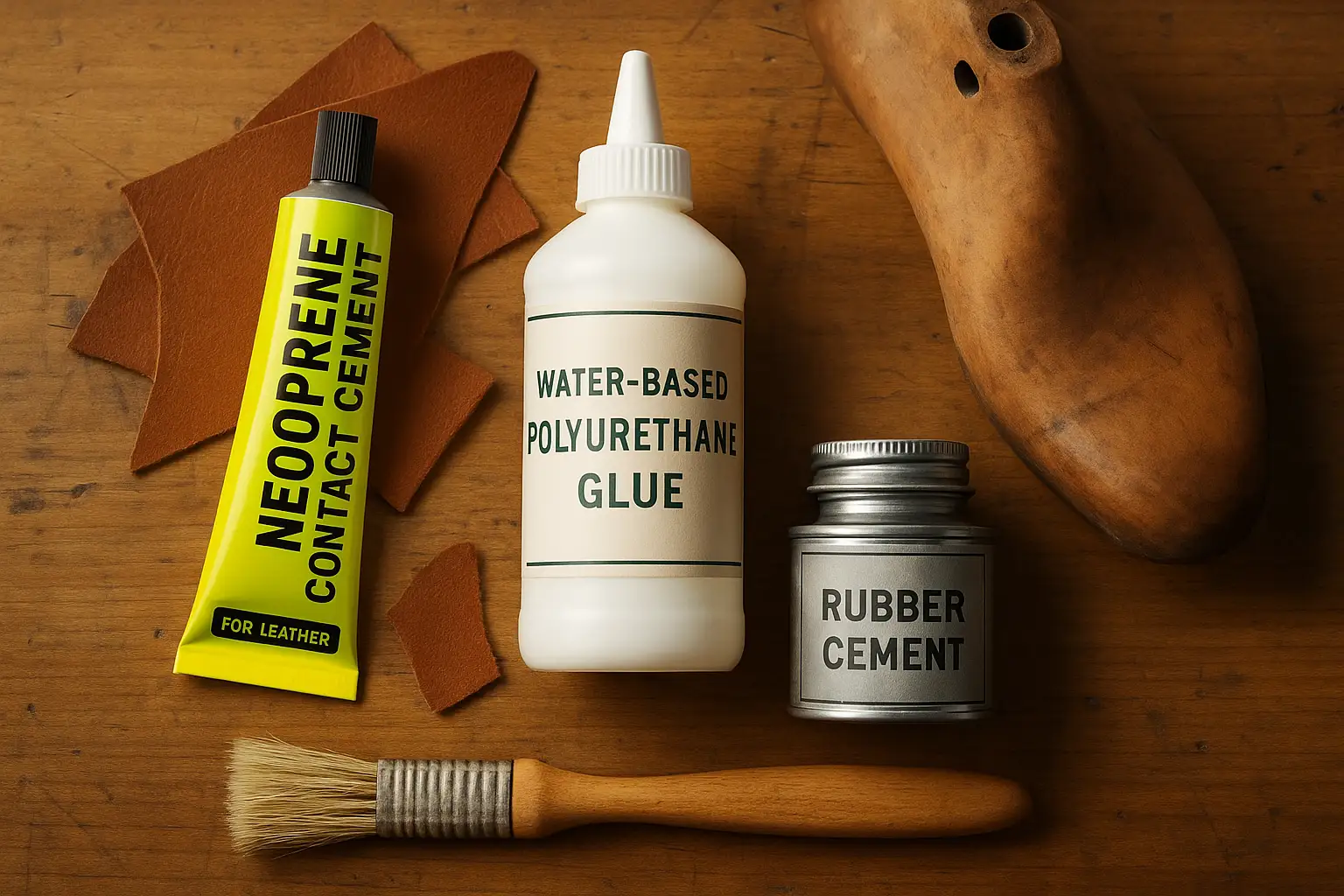When manufacturing leather shoes, choosing the right adhesive is crucial for durability and performance. Different materials—leather, rubber, fabric, and synthetics—require specific glues to ensure strong, flexible, and long-lasting bonds. Here’s a breakdown of the best adhesives for various shoe types.
What Is the best adhesive for leather shoes?
Leather shoes are mainly business leather shoes and casual shoes. The upper is mostly made of genuine leather (cowhide, sheepskin), the lining is cotton or pigskin, the midsole may use leather or EVA, and the outsole is made of rubber or TPR (thermoplastic rubber).
The bonding of genuine leather and rubber sole is the key point. The traditional process uses neoprene because it has good adhesion to leather and rubber. In order to improve the bonding effect, the leather and rubber need to be polished and cleaned before bonding, and the heating and pressurization process is used.
Water-based glue is often used to bond the upper and the lining to avoid solvent damage to the leather. High-end leather shoes may still retain some stitching processes, but gluing is still the mainstream to ensure overall firmness.A close-up of a hand applying adhesive for leather with a brush to the rough surface of a leather shoe insole.

Hiking boots
Hiking boots need to cope with complex terrain and bad weather, so the material selection tends to be wear-resistant, waterproof and supportive.
The upper is usually made of top-layer cowhide, waterproof nylon or GORE-TEX fabric, the lining is breathable sponge or wool, the midsole is mostly high-density EVA or PU, and the outsole is made of high-grip rubber (such as Vibram).
When bonding, key parts of hiking boots such as the outsole and midsole, upper and outsole need to use high-strength glue, such as neoprene or polyurethane glue.
Neoprene is highly weather-resistant and can remain sticky in low temperature or humid environments, while polyurethane glue has good elasticity and can adapt to severe bending. In addition, polyurethane sealants are used at the seams of waterproof boots to prevent water seepage. These glues cure under high temperature and pressure to ensure that they do not come apart during long-term hiking.
Sports shoes adhesive
Sports shoes pursue lightness and shock absorption. Common materials for the upper include mesh, Flyknit, synthetic leather and TPU support sheets. The midsole is mostly made of EVA or foamed TPU (such as Boost), and the outsole is made of wear-resistant rubber or foamed rubber.
When bonding sports shoes, different material combinations have different requirements for glue.
For example, when bonding mesh to EVA midsole, it is necessary to use water-based polyurethane glue with strong permeability to avoid hardening of the glue and affecting softness. When the TPU support sheet is combined with the upper, hot melt glue may be required for quick fixation. Modified PU glue is usually used for outsole bonding because of its good elasticity and can adapt to repeated bending during running. In addition, under the trend of environmental protection, many brands have switched to solvent-free glue to reduce irritating odors.
Glue for basketball shoes
Basketball shoes emphasize support, shock absorption and anti-torsion. The upper materials include synthetic leather, engineered mesh, and hot-melt film. The midsole often uses Phylon, Zoom Air or Pebax foam materials, and the outsole mostly uses high-wear-resistant rubber (such as XDR).
The bonding requirements of basketball shoes are extremely high, especially the connection between the outsole and the midsole, because the actions such as sudden stops and changes of direction require strict tear resistance of the glue.
Generally, high-elastic polyurethane glue or modified neoprene is used, and some brands will add a fiber reinforcement layer to improve the bonding strength. The upper material is diverse. Hot melt adhesive is often used to quickly fix TPU support strips, while the bonding of mesh and foam requires soft glue to avoid hardening. The gluing process of professional basketball shoes is usually combined with high-temperature molding to ensure stability under long-term intense exercise.
Rain boots
The core requirement of rain boots is waterproof. The materials are mainly PVC and rubber. Some high-end models may use PU coated fabrics. The shoe body is integrally injection molded or glued, and the seams need to be completely sealed.
Because PVC and rubber are not easy to bond, rain boots are usually produced using solvent-based neoprene or special PVC glue, which can maintain stability in humid environments. Before bonding, the surface of the material needs to be chemically treated (such as primer) to enhance adhesion. All-rubber rain boots may use vulcanization technology to make the shoe body and sole integrally molded to avoid the risk of debonding. Waterproof strips will be additionally coated at the seams to ensure that there is no leakage after soaking in water for a long time.
Match the Glue to the Material
The best adhesive depends on the shoe’s materials and stresses. Leather thrives with neoprene or PU, rubber demands flexible cement, and fabrics need water-based options. Always prepare surfaces properly and follow curing instructions. Whether repairing or building footwear, the right glue ensures longevity—no more peeling soles or split seams!
Pro Tip: For leather repairs, neoprene-based contact cement is the gold standard—flexible, weatherproof, and incredibly strong when applied correctly.
